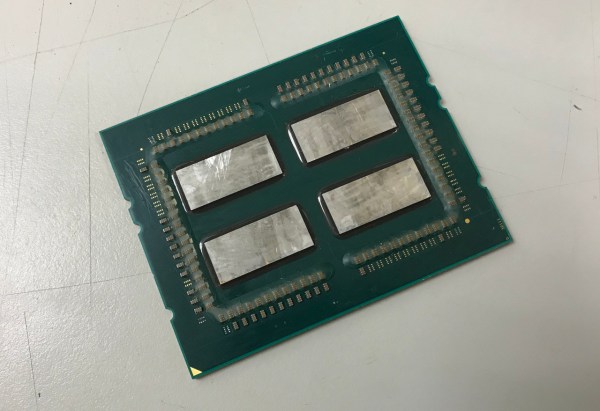Although AMD has been losing market share to Intel over the past decade, they’ve recently started to pick up steam again in the great battle for desktop processor superiority. A large part of this surge comes in the high-end, multi-core processor arena, where it seems like AMD’s threadripper is clearly superior to Intel’s competition. Thanks to overclocking expert [der8auer] we can finally see what’s going on inside of this huge chunk of silicon.
The elephant in the room is the number of dies on this chip. It has a massive footprint to accommodate all four dies, each with eight cores. However, it seems as though two of the cores are deactivated due to a combination of manufacturing processes and thermal issues. This isn’t necessarily a bad thing, either, or a reason not to use this processor if you need to utilize a huge number of cores, though; it seems as though AMD found it could use existing manufacturing techniques to save on the cost of production, while still making a competitive product.
Additionally, a larger die size than required opens the door for potentially activating the two currently disabled chips in the future. This could be the thing that brings AMD back into competition with Intel, although both companies still maintain the horrible practice of crippling their chips’ security from the start.











